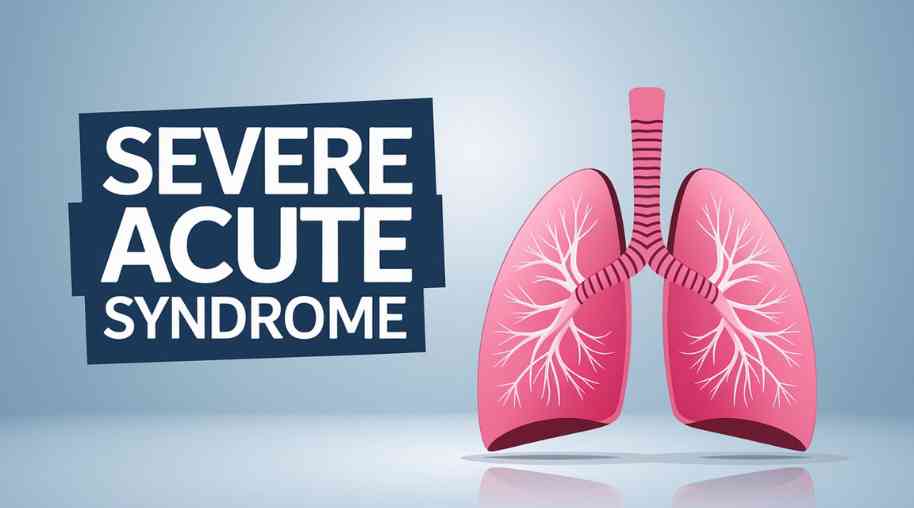SARS Full Form-Severe Acute Respiratory Syndrome
by Shashi Gaherwar
0 1800
Severe Acute Respiratory Syndrome (SARS): Causes, Symptoms, and Prevention
Severe Acute Respiratory Syndrome (SARS) is a viral respiratory illness caused by the SARS-CoV (Severe Acute Respiratory Syndrome Coronavirus). It emerged in 2002 in China and led to a global outbreak in 2003, affecting over 8,000 people across 29 countries. SARS primarily affects the respiratory system, causing severe pneumonia-like symptoms and, in some cases, leading to fatal complications.

Understanding the origins, transmission, symptoms, and preventive measures of SARS is essential to mitigate similar outbreaks in the future.
Causes and Transmission of SARS
SARS is caused by the SARS-CoV virus, which belongs to the coronavirus family. This virus is believed to have originated in bats and transmitted to humans through an intermediate animal host, possibly civet cats. The primary modes of SARS transmission include:
- Person-to-Person Transmission: SARS spreads through respiratory droplets when an infected person coughs or sneezes.
- Direct Contact: Close contact with an infected individual increases the risk of transmission.
- Surface Contamination: The virus can survive on surfaces for several hours, making indirect transmission possible through contaminated objects.
- Airborne Transmission: In some cases, airborne particles may also contribute to the spread of the virus.
Symptoms of SARS
SARS symptoms typically appear 2 to 10 days after exposure. The illness progresses in stages, beginning with flu-like symptoms and developing into severe respiratory distress. Common symptoms include:
- Fever (above 100.4°F or 38°C)
- Chills and body aches
- Severe cough
- Shortness of breath
- Fatigue and weakness
- Sore throat and runny nose
- Diarrhea (in some cases)
In severe cases, SARS can lead to pneumonia, lung failure, and multi-organ damage, which can be life-threatening, especially for older adults and individuals with weakened immune systems.
Diagnosis of SARS
SARS is diagnosed using a combination of clinical symptoms, laboratory tests, and imaging techniques such as:
- Polymerase Chain Reaction (PCR) Test: Detects SARS-CoV genetic material in blood or respiratory samples.
- Serology Tests: Identifies SARS-CoV antibodies in the blood.
- Chest X-ray or CT Scan: Reveals lung infections and pneumonia-related complications.
Treatment for SARS
Currently, there is no specific antiviral treatment for SARS. Medical care focuses on relieving symptoms and preventing complications. Common treatment methods include:
- Oxygen therapy for breathing difficulties
- Mechanical ventilation in severe cases
- Fluid and electrolyte management to prevent dehydration
- Pain relievers and fever reducers
- Experimental antiviral medications (under research)
Prevention and Control Measures
Preventing the spread of SARS requires public health interventions and personal protective measures, such as:
- Good Hygiene Practices: Washing hands frequently with soap and water or using hand sanitizers.
- Wearing Face Masks: Especially in crowded places or healthcare settings.
- Avoiding Close Contact: Maintaining distance from infected individuals.
- Disinfection of Surfaces: Regularly cleaning frequently-touched objects.
- Isolation and Quarantine: Infected individuals should be isolated to prevent community spread.
Impact of the 2003 SARS Outbreak
The 2003 SARS outbreak had global health and economic consequences, including:
- Over 8,000 reported cases and 774 deaths worldwide.
- Significant economic losses, especially in travel, tourism, and healthcare industries.
- Improved pandemic preparedness and international cooperation in disease control.
- Advancements in coronavirus research, aiding future outbreak responses.
Lessons from SARS for Future Outbreaks
The experience with SARS helped shape global pandemic response strategies, including:
- Strengthened Surveillance Systems: Early detection of emerging infectious diseases.
- Improved Quarantine Measures: Rapid isolation of suspected cases.
- Vaccine Development Acceleration: Research on coronaviruses led to faster vaccine development for future outbreaks.
- Public Awareness Campaigns: Educating people on hygiene and prevention methods.
Severe Acute Respiratory Syndrome (SARS) was a major global health crisis that underscored the need for robust disease surveillance and rapid response systems. Although SARS was contained successfully, the world remains at risk for similar outbreaks. Continuous research, preventive measures, and international collaboration are essential to mitigate future pandemics.
Further Learning Resources
If you’re passionate about building a successful blogging website, check out this helpful guide at Coding Tag – How to Start a Successful Blog. It offers practical steps and expert tips to kickstart your blogging journey!
For dedicated UPSC exam preparation, we highly recommend visiting www.iasmania.com. It offers well-structured resources, current affairs, and subject-wise notes tailored specifically for aspirants. Start your journey today!

Share:








Comments
Waiting for your comments